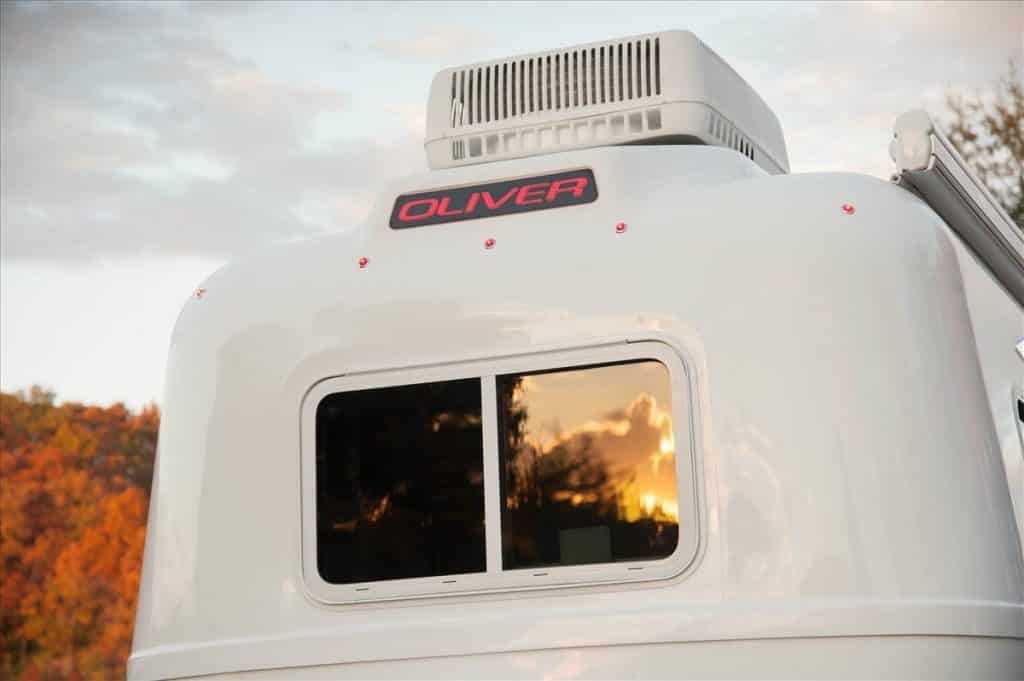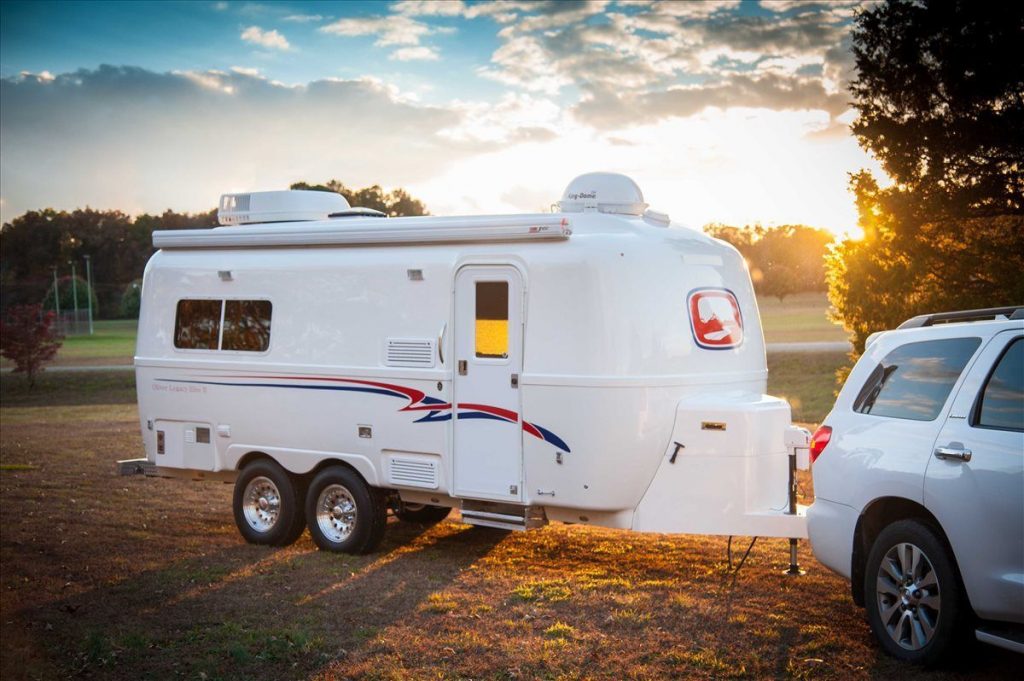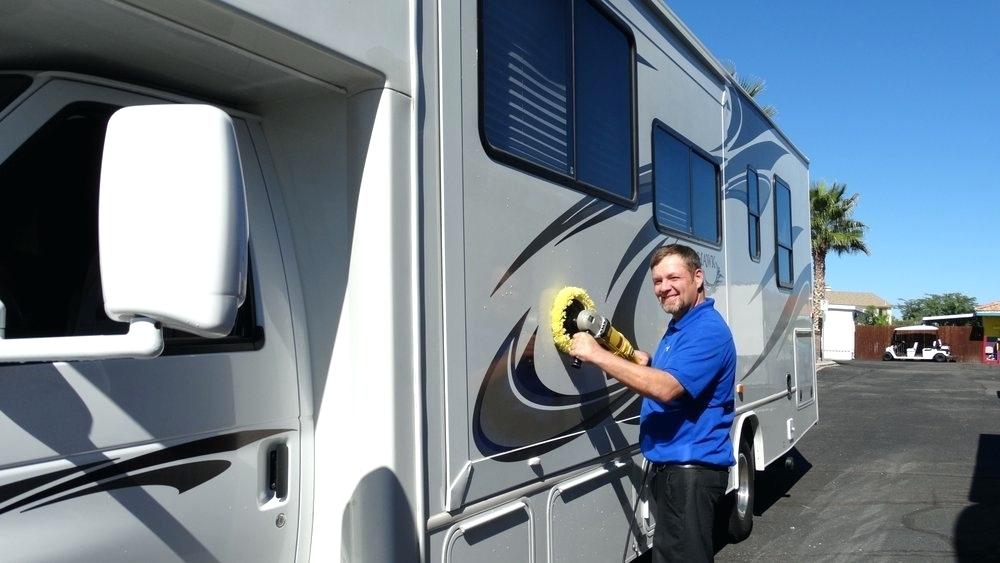Your RV should look and feel clean simply for the reason that you live there. And, it needs extra care when there is fiberglass used in the body framework. Fiberglass is highly durable without being overpriced. It also offers moderate protection from shocks causing by other heavy-duty vehicles on the road and small bumps and thuds. It’ll be useful to know how to remove oxidation from RV fiberglass.
Oxidation reduces the lifespan of fiberglass along with blocking the views and affecting the RV aesthetic. Keeping this chemical reaction at bay is necessary because it produces rust, which is a death sentence for metals in the vehicle’s framework.
Contents
Why Does Fiberglass Oxidation Happen?
Weather elements such as excessive moisture, pollutants in the air, and blazing sunlight quicken the process of oxidation. These elements weather the fiberglass coating, which is a gel raising substance that gives the fiberglass a glossy, smooth finish. When the coating fades, the surface gets exposed to these things and slowly forms oxidation.
A wax coating is applied to the fiberglass surface to prevent oxidation but that protective film also wears out over time. Poor maintenance is another reason for the fiberglass surface to be faded and rusted quickly.
If oxidation starts to set in and damage your RV’s fiberglass, you should learn how to remove it. But your first attempt should be to take steps for preventing oxidation from forming.
How to Prevent Oxidation from Forming?
You already know that weather elements and withering sunlight are the culprits to cause oxidation on the fiberglass surfaces. As an RV-er, you should learn how to remove oxidation from RV fiberglass but it would also be great to apply some tricks to prevent it from forming in the first place.
Regular maintenance and cleaning are the primary conditions for fending off rust formation or discoloration. Wash the vehicle on a regular basis to prevent oxidation. Also, if you see signs of rust in a small area, take immediate cleaning action to stop it from spreading. Wax the fiberglass every time after a thorough cleaning to create an extra layer of protective barrier.
Keep the vehicle under a shade or away from direct sunlight when parking. If you don’t intend to live in the RV during the winter months, store it in a garage.
Remember that with regular cleaning and waxing, oxidation will still develop but not in an aggressive manner. You can keep it under control with proper maintenance and cleaning work.
READ MORE:
How to Remove Oxidation from RVFiberglass
Removal of oxidation from a fiberglass surface is not an easy feat. A mix of water and automotive soap is not going to cut it. However, you can do it with the right application and patience.
Here are two ways how to remove oxidation from RV fiberglass.
1# Removing Mild Oxidation
Mild oxidation is easier to get rid of but still needs some effort. A degreasing agent is enough for the removal of light to mild rusting. At the primary stage of oxidation, the fiberglass turns chalky and catches dust, causing grease formation on its surface.

When you are washing the RV, apply a high-quality degreasing agent to the grease formation. Some solutions require a few minutes to work on a greasy spot. So, let it sit for a while and then rub a little. Rinse the surface. If there is still some grease, apply the degreaser again and then wash the spot.
The next step is to apply the oxidation remover, not to the whole RV but only to the fiberglass. Use a polishing pad or electric buffer to apply this foamy liquid on the glass surface. Wait until it dries off and then lightly rub with a soft cloth or a microfiber towel.
The fiberglass will look shiny already but you still have to apply a polishing substance. It will not only make the glasses look glossy but also smooth out the surface by further peeling of oxidation, worn-out paint and filling out stains and scratches. You might be thinking about how to polish RV fiberglass. Use a power or manual buffer to make the application easier.
The last step to finish this task is to apply wax to the treated area so it does not come in contact with outdoor elements. Meguiar’s has some of the best RV wax for fiberglass while Turtle Wax T-477R ICE Spray Wax or Nu Finish liquid car polish could be a good option too.
Check out the full reviews of top-rated RV wax here:
2# Removing Extreme Oxidation
So, you have learned how to remove oxidation from RV fiberglass, but what to do in case of extreme rusting?
Applying an oxidation remover only will not work this time. You have to do wet sanding along with polishing and waxing to make the surface look new again.

Do Wet Sanding
So, you may have to do wet sanding for removing oxidation from fiberglass. However, sanding is a time-consuming task and removes the top layers of the coating. It can damage the fiberglass surface if you have no experience of doing this. Do this only when you feel confident and are sure that no other cleaning agent can help.
Take a sandpaper sheet (2,000 grit for light oxidation damage and 1,200 to 1,500 grit for severe conditions). Depending on the severity of the oxidation, you have to choose coarser or finer grit sandpaper. Handle the coarse sandpaper with care as it can scrape the fiberglass surface if not used in the right way.
Now, let’s find out how to remove oxidation from RV fiberglass through wet sanding:
a# Soak the sandpaper in water
Got the right sandpaper? Good. Now, soak it in water for a day. Some experts suggest mixing a bit of automotive soap into the water to tone down the sandpaper’s corrosive properties so it doesn’t burn the paint.
Soak several pieces since sandpaper wears out quickly and one piece will not be enough if the oxidation spreads to a large area.
b# Wash the RV
Sanding should be done on a clean surface, free of dirt and debris. So, you will need to wash the RV, or at least the fiberglass surfaces, with automotive soap mixed water. After washing with soapy water, rinse with clean water.
There is no need to wait for the surface to dry out. In fact, a wet surface will work better in keeping the sandpaper cool. So, you can just move on to sanding right away.
c# Sand the fiberglass surfaces
Wrap the sandpaper around a sponge pad or rubber squeegee for better sanding, as you cannot sand evenly by using the fingers. Select an area and start sanding by applying a little pressure in circular motions. If it does not bring any change to the surface, keep increasing the pressure until it does.
Change the direction of sanding motion once in a while to make sure that all parts get equal treatment. Also, keep the sandpaper wet to avoid burning the paint. Get a new sheet of sandpaper when the old one wears out or becomes too soft that makes it impossible to use.
If you are using a coarse sandpaper sheet, don’t forget to finish off with a finer grit one for removing small imperfections like light scuff marks and level the surfaces.
d# Rinse and let dry
When the fiberglass surface looks and feels smooth, stop sanding and rinse the surfaces to wash out the residue of soap and debris. Thorough rinsing is necessary because you will apply polish and wax on this surface.
After the rinsing, leave the vehicle to dry the surfaces completely. However, avoid direct sunlight since the UV ray will damage the surface in the absence of any protective coating. Rather, keep it in a shaded area or use microfiber towels to speed up the drying process. You can even use a hairdryer too if available.
Polish the Fiberglass
To polish the fiberglass surface, never settle for a cheap product. Purchase a high-grade polishing compound even if it costs a bit more. Apply this polish on the fiberglass with a soft cloth or a buffer. The latter one is a better option as it ensures a consistent application and a smooth coating.

Always follow the instructions provided with the polishing product regarding how to apply it. Remember to be gentle when applying pressure with the buffer on the surface; otherwise, you will burn the paint.
Apply Wax Coating
The polishing is supposed to make the fiberglass surfaces look plain and glossy. In this final step, you have to apply wax to those areas to protect them from sunlight and weather elements.
This is how to remove oxidation from RV fiberglass. Remember that there is no need to sand the glasses unless there is severe rusting. Also, always use proper tools and high-quality products to get the best result.

The method for shining a fiberglass RV varies according to on the product used. This is due to the fact that various brands have varied formulas. Some companies sell multifunctional RV care items. All you have to do with this is grab a cloth or a buffer, depending on the directions, and just apply it to your car.